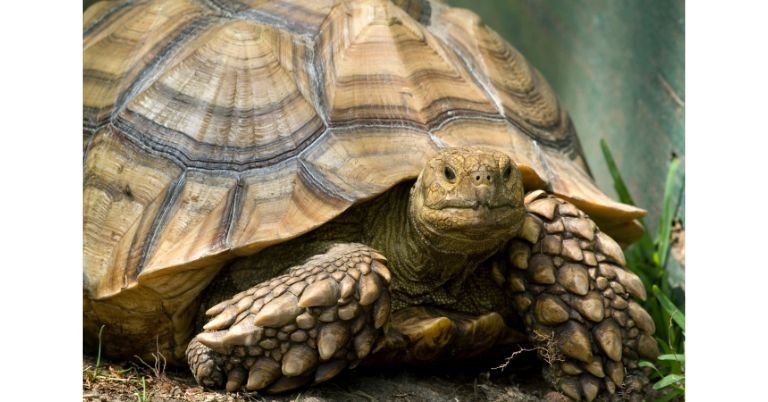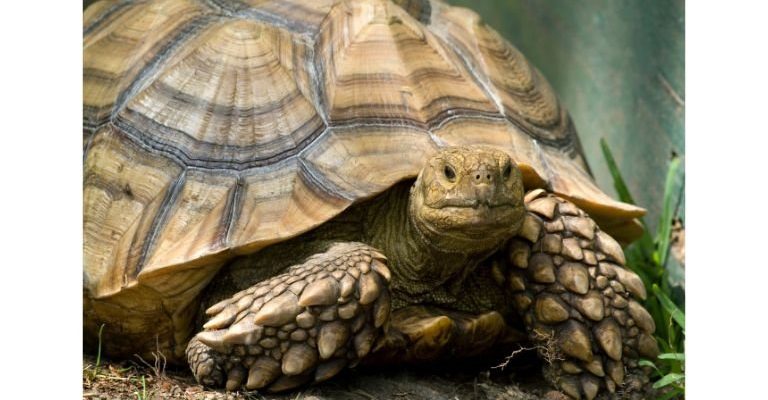
Sulcata tortoises, also known as African spurred tortoises, can be fascinating companions, but they come with specific needs and challenges. Think of them like a long-term commitment, akin to a cozy friendship that requires care, understanding, and sometimes, a little extra effort. In this guide, we’ll explore everything from their habitat requirements to dietary needs, so you can make an informed decision about bringing one of these captivating creatures into your life.
Understanding the Sulcata Tortoise
To start off, it’s important to know what you’re getting into with a sulcata tortoise. These sizable reptiles can grow up to 100 pounds and live for decades—often reaching 50 years or more! Imagine having a pet that could potentially be around longer than some friendships. They’re native to the African savannas and are well-known for their strong personalities and sturdy shells.
Sulcatas are herbivores, thriving on a diet primarily made up of grasses. Their eating habits are quite fascinating. You might find it amusing to watch them graze for hours, munching away as if they were the most leisurely diners ever. They also enjoy basking in the sun, so having ample outdoor space is crucial. If you live in a climate that doesn’t offer enough warm days, you’ll need to get creative with lighting and heat sources indoors.
Are They Easy to Care For?
You might be wondering, “Are sulcata tortoises easy to care for?” The answer isn’t a simple yes or no. They do require specific conditions to thrive. For one, they need a spacious enclosure because of their size. A small aquarium won’t cut it! Ideally, they should have an outdoor area where they can roam around safely, but if that’s not an option, a roomy indoor habitat is essential.
Here’s what you need to know about their care:
- Space: They need a lot of room to move. A tortoise table can work for smaller sizes, but as they grow, an outdoor pen becomes necessary.
- Temperature: Keeping their environment warm is essential. A temperature gradient, with a basking area of around 90°F, is ideal.
- Humidity: While they’re desert dwellers, maintaining some humidity in their habitat can help with shedding and overall health.
Keeping these factors in mind can help you create a comfortable and healthy environment for your new friend.
Diet Essentials for Sulcata Tortoises
Feeding your sulcata tortoise can be one of the more enjoyable parts of pet ownership. Their diet mainly consists of high-fiber grasses, which help keep their digestive systems in check. You might think, “But what exactly should I feed them?” Here’s a breakdown:
- Grass Hay: This should make up most of their diet. Timothy hay is a popular choice.
- Weeds: Dandelion greens and clover are not just safe but also nutritious!
- Vegetables: Offer leafy greens like romaine lettuce and collard greens in moderation.
Avoid high-protein foods, like pelleted tortoise food and fruits, as they can lead to health problems. Honestly, watching a sulcata munch away on hay can be quite charming. You might even find yourself rooting for them as they take their time enjoying each bite.
Potential Challenges for Beginners
While sulcata tortoises can be wonderful companions, they aren’t without their challenges. For beginners, a few aspects can be tricky. First, their size means they require lots of space. If you live in a small apartment, it might be wise to reconsider. A backyard with a secure pen will do wonders!
Another consideration is their long lifespan. A commitment of 50 years can feel daunting. It’s like adopting a furry friend with a long-term lease. You’ll want to think about your future plans and whether you can accommodate them.
Lastly, be prepared for their personality. Sulcatas can be quite stubborn and will not hesitate to dig out of their enclosure if they feel like it. Keeping them contained can sometimes be a challenge, so secure fencing is a must.
Socializing and Handling Your Tortoise
You might think tortoises are solitary creatures, but they can actually be quite social. They recognize their owners and can become accustomed to human interaction. To build a bond, spend time with them, gently handling them when they’re comfortable. However, it’s essential to approach them with patience.
When first introducing yourself, let them come to you. Avoid forcing interactions; instead, offer a tasty leaf or treat. This way, you’ll create a positive association with your presence.
Over time, you might find that your sulcata will respond to your voice and movements. Just remember, they can be a bit slow on the uptake, like that one friend who just doesn’t get the hint right away!
So, is the sulcata tortoise a good pet for beginners? Here’s the thing: if you have the space, time, and willingness to learn about their specific care needs, you could find immense joy in having one. They offer a unique companionship that’s both rewarding and challenging.
Keep in mind that they’re not for everyone. If you’re ready for the long haul and can provide a proper environment, a sulcata tortoise could be a wonderful addition to your life. Just like any relationship, it’s all about understanding, commitment, and, of course, a bit of love!

